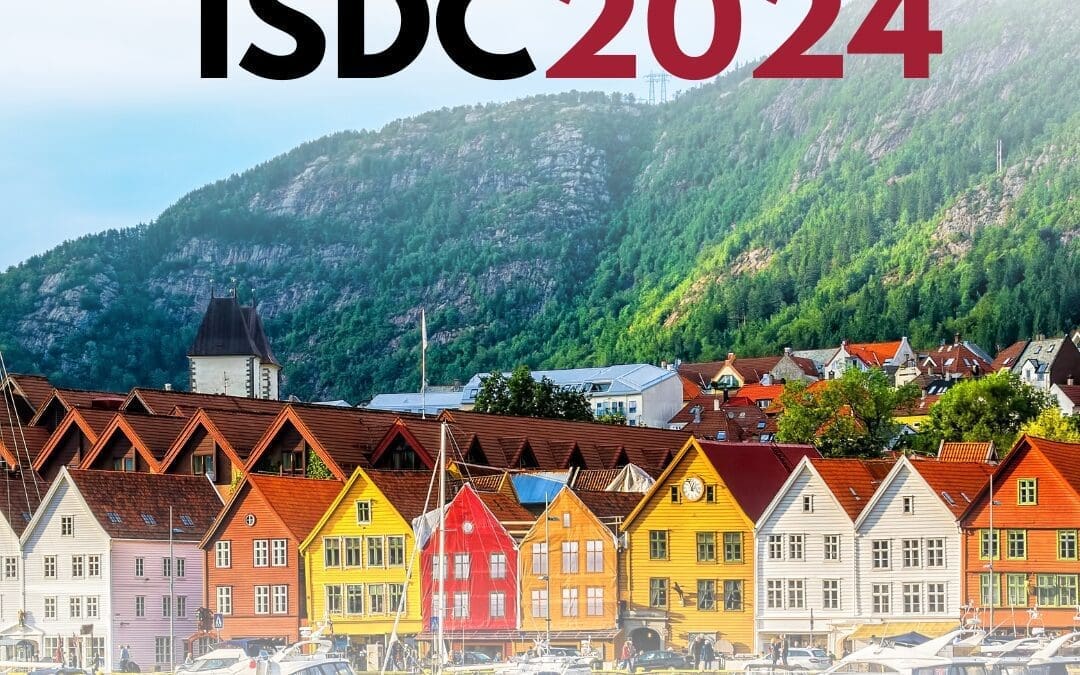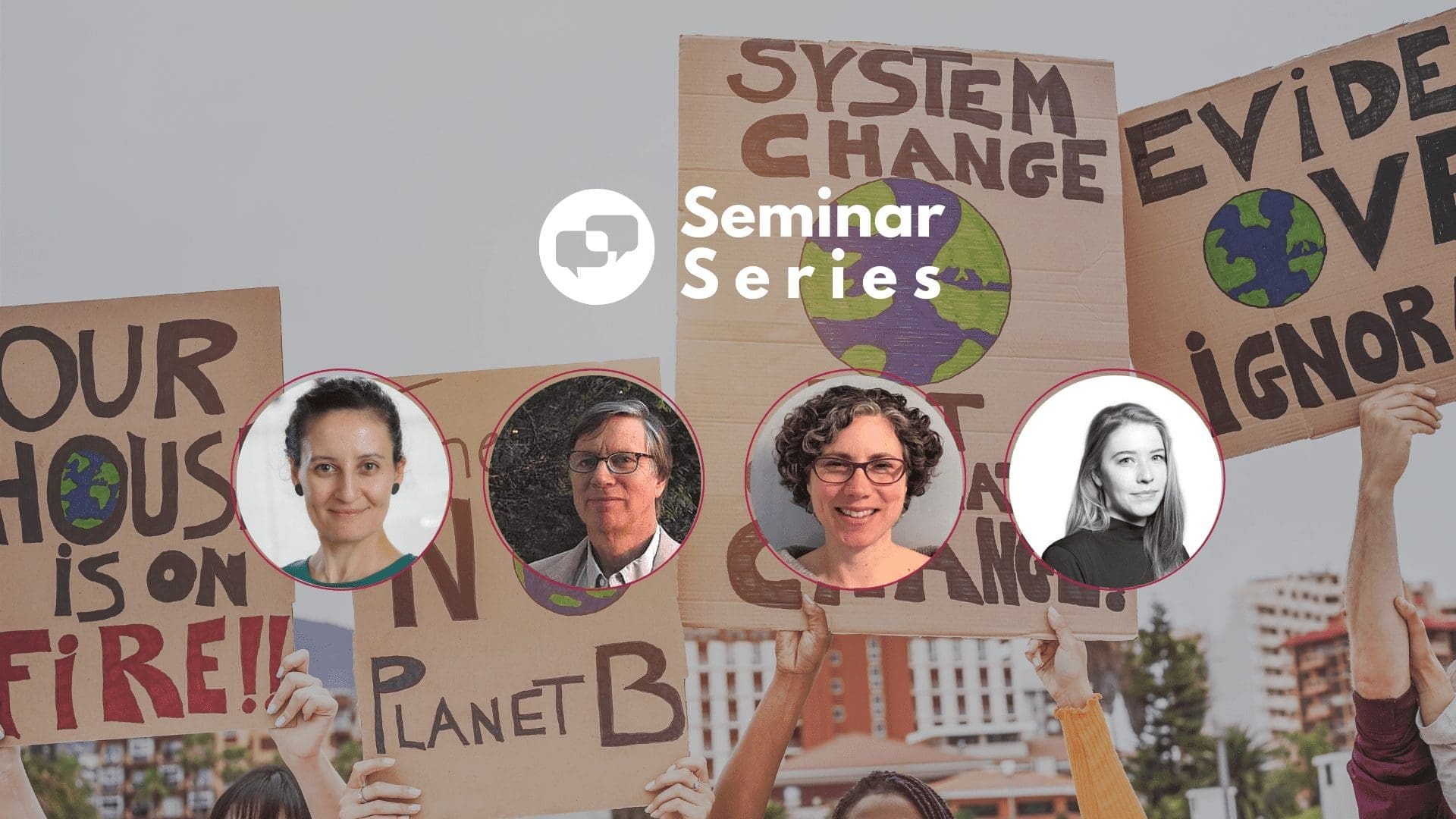System Dynamics for Climate Change Mitigation
We had an insightful Webinar with the participation of With Juliette Rooney-Varga, Carolyn McCarthy, Sibel Eker, and Steve Arquitt .
Integrated System Dynamics models of economy and environment have long been used for research and decision support for sustainability problems, starting with the seminal work of World Dynamics and Limits to Growth. We discussed how System Dynamics models support decision-making, stakeholder, and public engagement for climate change and sustainability problems. We reflected on existing models and tools, such as Climate Interactive’s En-ROADS and Millennium Institute’s iSDG tool, and their use cases. We also discussed how the Climate Change Initiative at UMass Lowell uses System Dynamics tools to raise awareness on climate change.
If you’re a member, you can watch the webinar recording here.
Below are the answers to questions asked live during the Webinar.
Learn more about the Seminar Series.
Q&A Seminar | System Dynamics for Climate Change
Climate Interactive:
How would you describe the interaction between complex models (GCMs …) and simpler system dynamic models in more detail? (how can they support each other?)
Shortly, large detailed models help for cross-validating the simpler models. In return, simple models support the complex models in stakeholder engagement and scenario co-production.
What are the similarities between the EN-Roads Model & the iSDG Model? What are the main differences?
Both EN-Roads and iSDG are based on the System Dynamics method. Both emphasize transparancy, user friendliness, and shared learning. Both place great emphasis on facilitation and support in shared learning. The differences: EN-Roads is a global model, where iSDG is customized to support planning in a particular country or geographic region. EN-Roads is focused on strategies to keep global temperature below a specified level, where iSDG’s focus is more diffuse taking on all the SDGs.
What are some of the major impacts that the Climate Interactive team see on the application side of the models?
This question was not clear to me during the webinar. If “application” means the use of Climate Interactive’s models, we see quite a substantial impact. Only En-ROADS has been used in 73 different countries so far, engaging almost 63000 people. We have a wide audience, from policymakers and philantropists to higher education students and community members. One of the most striking and uplifting recent examples of En-ROADS outreach is the events organized by one of our ambassadors with smallholder farmers in Tanzania.
Why don’t you use python as the intermediate language? Thanks
Answered during the webinar. Python is a user-friendly language but not as fast as C. We need speed in interactive simulators, so the Vensim model is converted to C.
Are system dynamics models being used in conjunction with Big data and AI?Can system dynamics models learn with machine learning?
There are initiatives about this as far as I know, and ML is very useful for quantifying empirical relationships, but outsourcing the model building completely to AI is not possible, neither desirable in my opinion. System Dynamics’s main strength lies in its descriptive nature, accessibility and understandability. While a hard coupling of SD and machine learning can provide many benefits, it might override the main strengths.
Since there seems to be many questions/comments regarding implementation/compliance, might it be helpful to start focusing on modeling the topic of governance itself, in order to identify and understand the influencing dynamics and loops on the gaps between the ideal solutions actually implemented?
In general, especially regarding specific sustainability governance problems, I agree that this should be the approach, because problem delineation and understanding the system strructure is key to developing any solution. In En-ROADS, though, the primary purpose is public engagement around the topic of “solutions”, hence the underlying dynamics are not co-modelled but shared with the users through various indicators and graphs.
Does the Climate Interactive climate-economy feedback have anything to do with Nordhaus’ “damage” function?
Since En-ROADS is an interactive simulator, it includes a damage function that allows the users to experiment with various “damage functions” found in the literature, including Nordhaus, or make their own assumptions. You can read more about it here
When will the nature-based/land-based parts in En-ROADS be accessible online?
In the next few months. Please check either the En-ROADS simulator or this page
Very interesting presentation Sibel. Can SDeverywhere and the implementation into a website be done by somebody completely unfamiliar with C or Java or any programming? Many thanks.
I must say that it would be a bit challenging for someone who has no programming experience. There are guidelines, though, which might be helpful to get started.
Questions to Millennium Institute
What are the similarities between the EN-Roads Model & the iSDG Model? What are the main differences?
Both EN-Roads and iSDG are based on the System Dynamics method. Both emphasize transparancy, user friendliness, and shared learning. Both place great emphasis on facilitation and support in shared learning. The differences: EN-Roads is a global model, where iSDG is customized to support planning in a particular country or geographic region. EN-Roads is focused on strategies to keep global temperature below a specified level, where iSDG’s focus is more diffuse taking on all the SDGs.
Are parts of iSDG Model publically available?
Yes, go to www.millennium-institute.org/isdg . There you can access a demonstration model, videos on the iSDG, and the model documentation.
To what extent is the Millennium Institute SDG model open source? It would be so nice to use it rather than starting modelling from scratch in every research project.
At this time the iSDG is not open source. iSDG models are developed within the frame of a specific project. However, much can be learned about the model and its structure by visiting www.millennium-institute.org/isdg.
@Steve, how do you integrate “indicators” of SDG’s to report a single metric?
The iSDG reports the status of each of the 17 SGDs separately. The level of performance of the targets falling under each SDG are averaged to calculate the SDG performance. Targets can be thought of as desired levels of indicators. For a complete explanation see https://www.pnas.org/content/pnas/suppl/2019/10/29/1817276116.DCSupplemental/pnas.1817276116.sapp.pdf
SDG and how it is implemented in real world is highly context-dependence – how iSDG address this?
The iSDG is customized for the country or regional setting. Workshops are held with local experts, decision-makers, and stakeholders who review the model and identify key issues and policies to include inthe iSDG model.
Steve’s question regarding connecting real action to the plan is important. How do we make the interactive modeling tools an integral part of follow up and feedback on action?
With climate change and the SDGs both this really hits the crux of the matter. With the iSDG it is important to involve a broad spectrum of stakeholders on the modeling team and in the workshops who are motivated to see that the selected scenarios are being transformed into policies and then funded. This will require a well-trained team that can run scenarios, derive policies and work with the relevant government people to assure implementation. Monitoring is essential, and needs to be built into the projects. I fully agree with Juliette that the models need to engage with citizens who will then push leaders to make the necessary changes. I would love to hear others’ ideas and experiences on this.
Why choose poverty as a key #1 SDG?
“No poverty” as SDG1 was defined and designated by agreement of the 193 Agenda 2030 signatory countries. There is debate about which SDG is the most important. The iSDG takes no position on which SDG is the most important However, in the iSDG poverty is linked to almost every SDG.
Is this model (MI iSDG Tool) built in STELLA?
If you mean the iSDG, yes the model I showed was built in STELLA however we also have a version in Vensim.
What are some of the active projects that MI is doing today?
Currently we are working on iSDG projects in Afghanistan, Bhutan, China, Uganda, Namibia, Djibouti, Kenya, Democratic Republic of the Congo.
This question–or 2 questions–are for Steve. First, are worldviews and values included in the iSDG models? If so, how? A second question relates to how the highest-level decision-makers regard the models. I’m new to SDS but spent a number of years working with a roughly analogous set of high-level
After some relection, worldviews and values are pervasive in the iSDG model by virtue of the SDGs themselves. iSDG is intended to help policy-makers design strategies and allocate resources for attaining the SDGs. This includes the “leave no one behind” principle, gender equity in education and economic opportunities, equitable income distribution, preserving biodiversity for future generations, rule of law and many others.
Questions to CCI
@CCI any tips on how to engage kids with these tools?
Find resources: Comprehensive Facilitator Resources Online World Climate Resources
Steve’s question regarding connecting real action to the plan is important. How do we make the interactive modeling tools an integral part of follow up and feedback on action?
Watch the recording for a full answer
@Juliette, could you say a bit about hope? There is a political divide especially in the US, but I read recently that % of the US population who feels anxious about climate change is ~68%. Could role-play games help deal with this anxiety?
Watch the recording for a full answer
“Research shows that showing people research doesn’t work”. What are your thoughts on this @Juliette?
We agree with John Sterman! But if you want to read more about this research, you can here
Why do you think that higher levels of “hope” begin and end higher with the i-H group?
Watch the recording for a full answer
Was the ethnic cultural diversity in your simulation group meetings more diverse than the photos would suggest? If not it’s concerning that you have a rather restricted sample?
Thank you for this question. The breakdown of participants’ racial and ethnic diversity for Building Consensus for Ambitious Climate Action through the World Climate Simulation can be found on page seven. Limitations relevant to our sample can be found on page 24 and reads, “Our sample was not randomly drawn from the general population and is therefore not expected to be representative of the American public. In addition, because the youngest participants in our study were drawn from programs serving low-income, first-generation-to-college students, age likely correlates with other demographic traits in our sample. We therefore do not claim that the observed effects of the simulation or demographics extend to the general American population.”
Recent Posts
Society Governance Updates
New System Dynamics Society leadership
Call for Presenters: Seminar Series
Share your insights in the System Dynamics Society Seminar Series. Submit your proposal and join a global community of experts
Honoring Excellence: A Glimpse into the Awards of the International System Dynamics Conference
Dive into the prestigious awards and honorable mentions of the International System Dynamics Conference, celebrating trailblazers and emerging talents in the field
Upcoming Events

2024 International System Dynamics Conference
The International System Dynamics Conference is coming to Bergen! Save the date: August 4-8, 2024. We hope to see you there! #ISDC2024
Recent Business cases
System Dynamics Helps Evaluate Anticipatory Action on Cholera Outbreaks
Humanitarian agencies encourage anticipatory action in disaster response to cholera outbreaks in the Democratic Republic of Congo.
Management Design for Planted Forests in Japan Using System Dynamics
Hanno City in Saitama Prefecture used a system dynamics model to enable detailed analysis of labor requirements and changes in forest conditions.
Solving Bottlenecks in Dairy Production Facilities with System Dynamics
FriedslandCampina employed system dynamics to strategically enhance production efficiency in the midst of factory merging.


